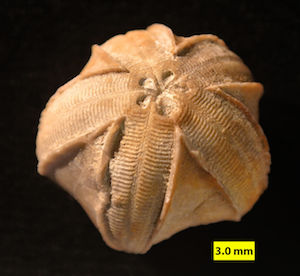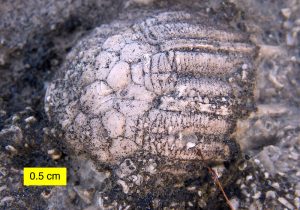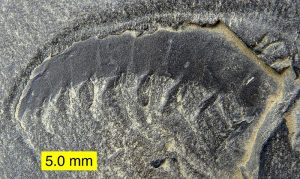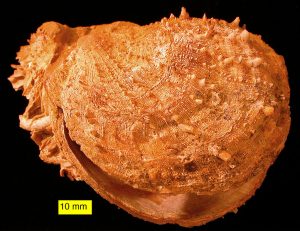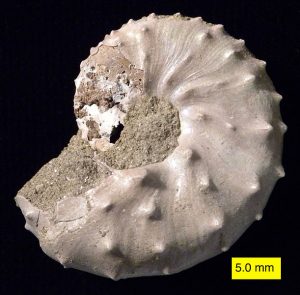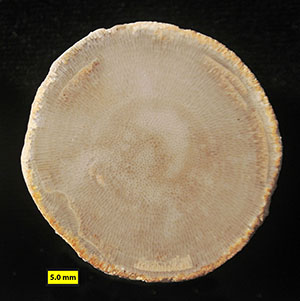The last week! Good luck finishing your research papers (due FRIDAY, 12/7, 7:30 a.m., Dropbox) and getting ready for next week’s final examination (Monday, 12/10, noon to 2:00 p.m.). Now on to our last topics:
Graptolites are disparate, fussy, and a bit strange, but they have significant biostratigraphic value. Our graptolite specimens for the most part look like little black hacksaw blades painted on black shale, so you may appreciate the better images on the Web. The Wikipedia graptolite article is short but informative. An amateur collector has put together a good presentation of Ordovician graptolites from the Athens Shale of Alabama.
Here are some useful links for the annelid worms. The group that we cover systematically is the Family Serpulidae of the Class Polychaeta. You’ve seen twisty white serpulid worm tubes for awhile in the laboratory. They encrust virtually any marine hard substrate, from rocks to corals to boat hulls.
The Class Tentaculita is incertae sedis, meaning it has “uncertain placement” in life’s catalog. We think they are related to the brachiopods and bryozoans (as lophophorates), but their systematic position is still debated. In this course you will be working with the cornulitids, tentaculitids and microconchids. (The latter are close to my heart!)
Let’s start with the Wikipedia page for trace fossils. Wooster has an excellent collection of hardgrounds, especially from the calcite seas of the Ordovician and Jurassic, on which we will see many borings. We also have a good soft-sediment trace fossil set, much of it inherited from the late Professor Richard G. Osgood, Jr.
Final Lab & Lecture Exam: December 10 (Monday), noon – 2:00 p.m.
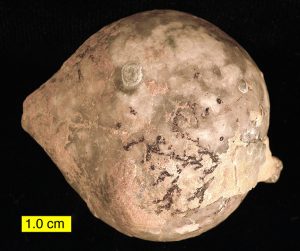
Encrusting graptolite (Thallograptus sphaericola) on the rhombiferan cystoid Echinosphaerites aurantium (Middle Ordovician, northeastern Estonia).
Geology in the News –
Here’s a great article on the eyes of scallops. They are much more sophisticated than I thought.
An unfortunate but not uncommon fight has broken out over the ownership of fantastic dinosaur fossils on private land. It may come down to what the definition of a mineral is, as in “mineral rights”. These fossils, of course, should be in a museum.
Speaking of museums, here’s a story of an important Cretaceous bird fossil recognized for what it is a full 25 years after its discovery and deposition in a museum. There are many treasures in museums waiting for trained and interested eyes.
Enypniastes eximia, commonly known as the “headless chicken sea monster”, has been recently filmed in the Gulf of Mexico. It is a dancing, swimming sea cucumber. Isn’t life delightful? (Much of it, anyway. Not tarantula hawks.)
Here’s a New York Times article describing the Permian Extinctions — and comparing these horrific events to the effects of climate change today. Be very afraid.

